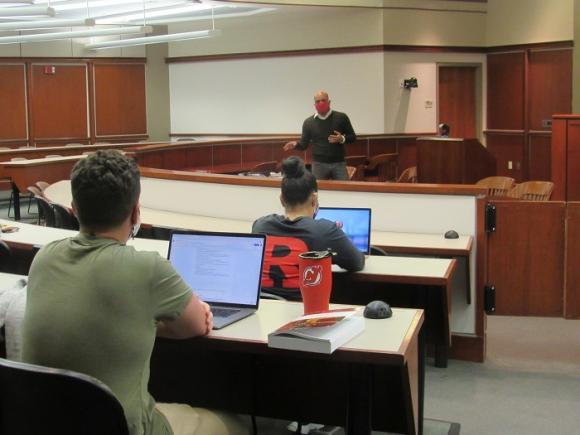Browsing Complex Cases: Just How to Establish Reliable Trial Presentations for Ideal Outcomes
Browsing Complex Cases: Just How to Establish Reliable Trial Presentations for Ideal Outcomes
Blog Article
Navigating the Complexities of Test Presentations: Tips for Seamless Distribution and Engaging Debates
In the world of legal procedures, the art of trial discussion stands as a vital factor of success. The complexities intrinsic in test discussions call for a fragile equilibrium of strategy, ability, and skill.

Recognizing Test Objectives
To effectively navigate a test, it is important to have a clear understanding of the objectives that need to be achieved. Before entering the court, legal groups must define their goals and wanted end results. These objectives act as directing concepts throughout the test, shaping methods and influencing decision-making procedures.
Recognizing test objectives involves a detailed evaluation of the instance, lawful criteria, and the client's benefits. Trial Presentations. It needs a meticulous examination of the facts, identifying essential issues, and expecting prospective difficulties. By setting quantifiable and specific goals, attorneys can tailor their arguments and presentations to align with the desired outcomes
Moreover, a clear grip of test purposes makes it possible for legal teams to focus on proof, witnesses, and legal disagreements efficiently. It allows for the advancement of a meaningful narrative that reverberates with the court and court, enhancing the general situation discussion.

Organizing Evidence Effectively
Having a clear understanding of trial goals lays the foundation for arranging proof successfully in legal proceedings - Trial Presentations. By straightening the discussion of evidence with the wanted results of the test, lawful teams can strengthen their debates and improve their persuasiveness. One vital element of organizing evidence is classification. Grouping proof based upon themes or relevance to particular lawful components can help simplify the presentation and make complex information much more digestible for the court or jury.
Another crucial element in arranging evidence efficiently is developing a logical flow. Providing proof in a sequential and coherent manner can assist develop an engaging narrative that supports the legal arguments being made. Furthermore, utilizing visual aids such as charts, charts, or timelines can even more improve the organization of evidence and aid in clarifying complex relationships or sequences of occasions.
In addition, making certain that all proof offered is relevant and permissible to the situation is important. Inadmissible or unnecessary evidence can detract from the toughness of the disagreement and potentially hurt the integrity of today party. A careful evaluation and selection procedure need to be carried out to consist of only the most legally audio and impactful evidence in the test discussion.
Crafting Influential Stories
Crafting compelling stories plays an essential duty in offering influential debates throughout lawful proceedings. When creating a story for a test discussion, it is crucial to establish a clear story that highlights key points and links them in a meaningful way. By weaving together proof, statement, and legal debates right into a natural and persuasive narrative, legal experts can efficiently promote for their customers and increase the likelihood of a beneficial result in the court.
Grasping Aesthetic Help
Effective usage of aesthetic aids is essential to improving the impact and clarity of trial presentations. Aesthetic aids, when used strategically, have the power to streamline intricate information, reinforce crucial Continue points, and leave a long-term perception on the judge and jury. To master visual help in test discussions, it is vital to ensure that they are clear, succinct, and pertinent to the debates being made.
When including aesthetic help, such as graphes, timelines, graphs, or photos, right into a test discussion, it is essential to keep them aesthetically appealing yet specialist. The visuals must complement the verbal arguments, offering an aesthetic depiction of the info being discussed without frustrating the target market with unnecessary information.
Additionally, experimenting the aesthetic help ahead of time is necessary to ensure a smooth shipment throughout the test. Familiarizing oneself with read the article the web content, changes, and timings of each visual help can assist keep the flow of the discussion and stop technological glitches that may develop.
Delivering Impactful Closing Disagreements
An engaging closing argument offers as the conclusion of a trial discussion, enveloping the core narrative and encouraging the judge and court towards a positive choice. Begin by describing the primary arguments that sustain your customer's setting, emphasizing why the proof provided throughout the test sustains your narrative.
Furthermore, incorporating sob story can further enhance your closing argument. By attaching and humanizing the situation on an individual degree with the decision-makers, you can evoke empathy and understanding, affecting their perception of the truths presented. Furthermore, stating you could try here the lawful criteria that must be satisfied for a desirable ruling can reinforce the validity of your position. Eventually, a well-crafted closing debate ought to leave an enduring perception, compelling the judge and court to rule in your customer's support.
Conclusion
Finally, understanding trial discussions includes understanding goals, organizing evidence, crafting narratives, using visual help, and providing impactful closing debates. By carrying out these techniques efficiently, lawyers can offer their case flawlessly and make engaging disagreements in the court. It is crucial to navigate the complexities of test discussions with accuracy and skill to attain success in legal process.
By lining up the discussion of proof with the preferred results of the trial, legal teams can reinforce their debates and boost their persuasiveness (Trial Presentations). To understand visual aids in trial discussions, it is essential to ensure that they are clear, succinct, and appropriate to the disagreements being made
A compelling closing disagreement offers as the end result of a test presentation, encapsulating the core narrative and persuading the judge and jury towards a desirable choice. Begin by detailing the main arguments that sustain your client's position, stressing why the evidence presented throughout the test sustains your narrative.In conclusion, understanding trial presentations entails understanding goals, arranging evidence, crafting narratives, using aesthetic aids, and delivering impactful closing disagreements.
Report this page